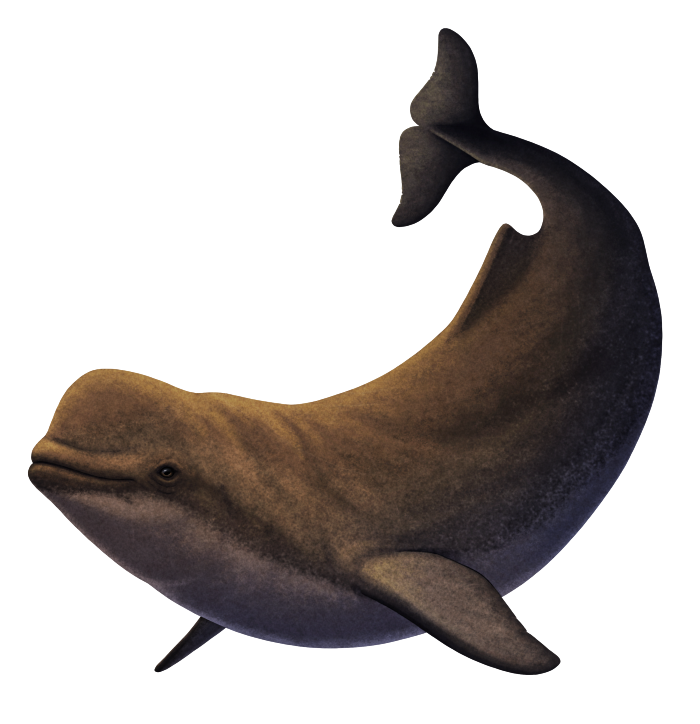Modern beluga whales and narwhals are the only living representatives of the monodontid lineage, found only in cold Arctic and sub-Arctic waters. But this whale family actually first evolved in much warmer climates – and some of them were downright tropical.
Casatia thermophila lived about 5 million years ago during the early Pliocene, in the Mediterranean Sea around Tuscany, Italy. Although known only from a couple of partial skulls and a few vertebrae it was probably similar in size to its modern relatives, around 5m long (16’4″).
It seems to have had a larger number of functional teeth than modern monodontids, and probably didn’t suction feed like its modern close relatives. Instead it may have fed more like most porpoises and dolphins, relying more on speed and snapping jaws to capture prey.
It inhabited the Mediterranean at a time not long after the sea there had mostly dried up and then been rapidly refilled. The presence of warm-water marine species such as bull sharks, tiger sharks, and dugongs in the same fossil beds as Casatia indicates the local climate at the time was hotter than it is today, with tropical temperatures – and suggests that this whale’s ancestors must have originally moved into the replenishing Mediterranean from lower latitudes alongside these other warmth-adapted animals.
This tropical monodontid was also much closer related to modern belugas than modern narwhals are, which raises the possibility that the two living monodontid species actually specialized for colder conditions completely independently of each other rather than descending from a cold-adapted common ancestor. Instead modern belugas and narwhals may have originated from separate warm-water monodontid ancestors who evolved similar cold-tolerant adaptations in parallel as the climate cooled during the onset of the Quaternary ice age, while the rest of their relatives all went extinct.

